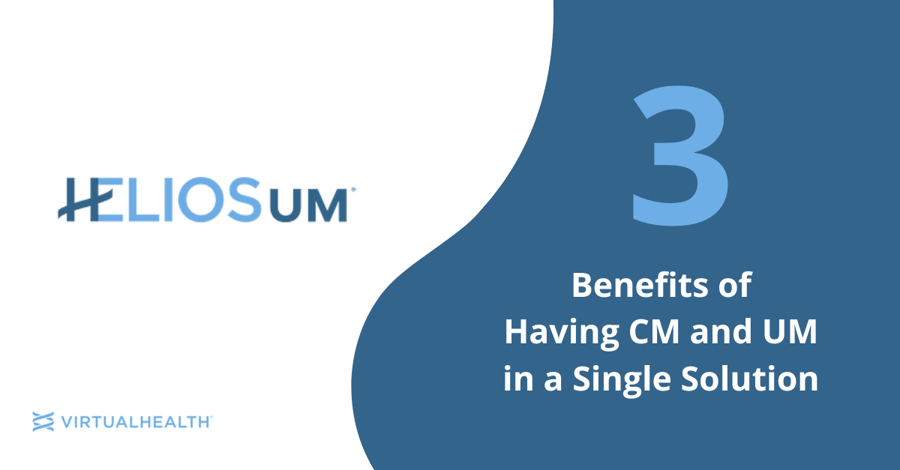In theory, utilization management (UM) should reduce the overall cost of care while improving outcomes for health plan members. But for many payers and providers using homegrown solutions and outdated, siloed platforms, the reality is much different. Without the ability to sync and share data across teams and departments, it’s nearly impossible to gain a comprehensive understanding of member health and care services.
Moreover, manual processes and burdensome paperwork take valuable time away from what matters most: delivering the best patient care.
Tight authorization timeframes and rules can also put a tremendous amount of stress on UM teams.
And member satisfaction can take a sizable hit when patients receive surprise bills for healthcare services or recommended treatments that aren’t covered by their health plans.
The Solution: Having Care Management and Utilization Management Together
The answer to these common UM issues is simple. Bring care management and utilization management together to provide member-centered, coordinated care.
When UM is integrated directly with a care management (CM) solution, payers can offer members true whole-person care. KLAS data indicated the value of this back in 2019:
“The researchers were able to determine customer satisfaction for vendor VirtualHealth, landing the vendor with the highest user satisfaction rate among all vendors with sufficient data. The KLAS data indicates that the payer industry could be on the brink of a technological shift in utilization and care management. Whether these indicators come to fruition will depend largely on which vendors achieve the highest functionality.
With a single, easy-to-use platform that includes cloud-based care management and utilization management tools, payers have a fully connected and seamless 360° view of members – with full visibility of both care management and utilization management teams.”
Since then, VirtualHealth has continued to drive innovation along this line and launched HELIOSum in 2022, which provided healthcare payors and organizations with an advanced UM solution aligned with care management. And this year, we just announced that we’re now able to offer automated prior authorization in HELIOS via a partnership with Edifecs.
A streamlined and integrated UM and CM platform addresses the common problems that lead to member dissatisfaction with appeals and grievances, approvals, and delivery of services. It also automates much of the workload for medical directors and the care teams.
Below are three primary benefits we’ve seen with a UM and CM integrated platform.
1. Efficiency Gains via Automation and Data Integration
By leveraging configurable rules and member information across departments or organizations, UM teams can apply real-time data to the review and concurrent review processes. Intelligent utilization management workflows and centralized data integration speed up authorizations and cut down on duplicate data entry. And when users can find the insights they need in just a few clicks, they reduce errors while gaining time back in their day to review more authorizations and deliver more services to more members.
Automated determinations driven by evidence-based criteria is another benefit of an integrated solution. With the ability to automate simple review processes, the team has more time to focus on complex cases. Plus, automated time tracking for all UM authorizations ensures that regulatory timelines are always met – and accurate.
2. Improved Accuracy with 360-Degree Views
With a complete picture of authorizations, grievances, appeals, and events, everyone – the care team, the UM team, payers, and providers – has a single source of truth. This level of transparency simplifies administrative tasks and ensures that all utilization reviews and documentation are based on real-time, accurate data.
Direct third-party integrations, such as access to clinical guidelines from organizations like InterQual or MCG, or the ability to leverage electronic authorizations, can also help ensure accuracy throughout UM processes. And when third-party guidelines are not available or desired, a platform with simple, self-service templates that allow you to develop custom guidelines is helpful.
3. Ensured Timeliness with UM Process Automation
By optimizing and automating your care management and UM processes, reviews, approvals, and hand-offs all become faster and more efficient. Here are just a few examples of how process automations in action can help:
- When authorization timelines are automatically generated, intake is faster, and you eliminate the errors associated with manual data entry.
- The automation of prioritizing makes high-priority authorization requests with tight turnaround timelines easy to identify and prioritize.
- Real-time auto-approvals enable faster delivery of services that meet predetermined guidelines, keeping members healthier and care teams happier.
- Industry-leading platforms with a vast partner ecosystem (e.g., Surescripts, TruePill, etc.) give the team time-saving access to electronic prior authorizations, RX, and appeals.
At the end of the day, a solution that integrates and streamlines UM and CM on one platform helps ensure that members get the clinically indicated services, prescriptions, or products they need, when they need it, in a timely manner.
If you want to learn how VirtualHealth is automating UM workflows and helping to reduce the delays and denials that lead to member dissatisfaction, check out HELIOSum here.



